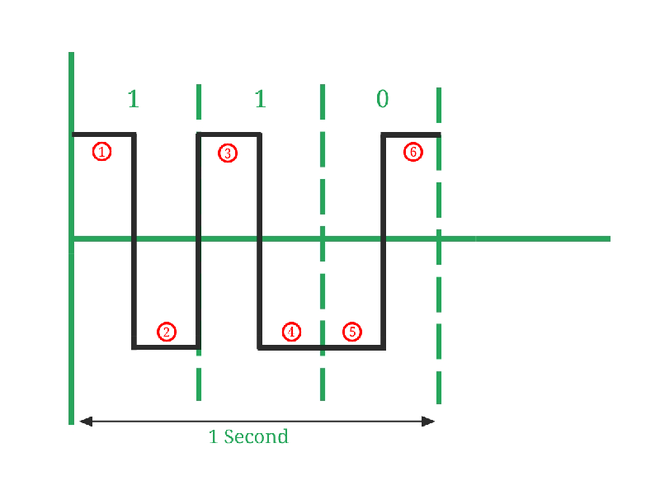In the realm of serial communication, baud rate stands as a crucial parameter governing the transmission speed of data between devices. Understanding baud rate is essential for configuring and optimizing communication protocols in various electronic systems. This article aims to unravel the mysteries of baud rate, exploring its definition, significance, and differences across different speeds.
What is Baud Rate?
Baud rate, named after the French telegraph engineer Emile Baudot, refers to the rate of signal changes per second in a communication channel. In simpler terms, it represents the number of symbols transmitted per second, where each symbol can represent multiple bits of data. Baud rate is commonly expressed in bits per second (bps) and is a fundamental parameter in serial communication protocols such as UART (Universal Asynchronous Receiver/Transmitter). Helpful resource: https://www.dictionary.com/browse/baud-rate

What is the Baud Rate after 9600?
After 9600 baud rate, the transmission speed typically increases in powers of two. Common baud rates beyond 9600 include 19200, 38400, 57600, 115200, and so on. Each successive baud rate doubles the transmission speed compared to its predecessor. For example, 19200 baud rate transmits data at twice the speed of 9600 baud rate, while 115200 baud rate operates at twelve times the speed of 9600 baud rate. Helpful resource: http://www.ece.northwestern.edu/local-apps/matlabhelp/techdoc/matlab_external/baudrate.html
What is the Difference Between 9600 and 115200 Baud Rate?
The primary difference between 9600 and 115200 baud rates lies in their transmission speeds and respective applications. Here's a comparative overview:
-
Transmission Speed: 9600 baud rate transmits data at 9600 bits per second (bps), while 115200 baud rate operates at a significantly faster speed of 115200 bps. This means that the latter can transmit data approximately twelve times faster than the former.
-
Suitability for Different Applications: 9600 baud rate is commonly used for standard communication tasks in applications such as serial printers, industrial control systems, and embedded devices. It provides a balance between data transfer speed and reliability, making it suitable for most general-purpose serial communication requirements.
-
Increased Throughput: In contrast, 115200 baud rate offers significantly higher throughput, making it ideal for applications that demand faster data transfer rates. These may include high-speed data logging, real-time monitoring systems, and advanced communication protocols where rapid data exchange is critical.
-
Considerations for Compatibility: When using higher baud rates such as 115200, it's essential to ensure that both the transmitting and receiving devices support the selected baud rate. Additionally, factors such as cable quality, signal integrity, and noise interference should be considered to maintain reliable communication at higher speeds.
Helpful resource: https://forum.arduino.cc/t/9600-vs-115200-baud-serial-pros-and-con/1133137
Baud Rate vs. Bit Rate
While baud rate and bit rate are interconnected in some communication schemes, they differ significantly in their definitions and applications:
-
Representation: Baud rate measures the rate of signal changes or symbols transmitted per second, irrespective of the number of bits represented by each symbol. In contrast, bit rate directly quantifies the number of bits transmitted per second, providing a more granular measure of data transfer speed.
-
Relationship: In certain modulation schemes, such as in ASK (Amplitude Shift Keying) or FSK (Frequency Shift Keying), each symbol transmitted at a specific baud rate may encode multiple bits. Therefore, the bit rate can be higher than the baud rate, depending on the modulation technique employed.
-
Impact on Data Transmission: Baud rate influences the signaling speed and timing synchronization between transmitting and receiving devices, affecting the overall efficiency and reliability of communication. Bit rate directly determines the throughput or data transfer capacity of a communication channel, influencing the speed at which information can be exchanged between devices.
In conclusion, baud rate serves as a fundamental parameter in serial communication, determining the speed at which data is transmitted between devices. Understanding the nuances of baud rate, including its definition, progression beyond 9600, and differences across various speeds, is essential for configuring efficient and reliable communication systems in diverse electronic applications.
Facts Checked by Hugh Johnson
Hugh Johnson stands tall in the realms of both the Integrated Circuits (ic Chips) industry and the electronic parts industry, earning acclaim as an esteemed expert in these fields. With an extensive background steeped in semiconductor technology, Hugh's expertise transcends chip design and fabrication, encompassing a profound understanding of electronic components' intricate functionalities and applications. His seasoned knowledge spans diverse facets, from microchip architecture and fabrication techniques to the broader landscape of electronic parts utilized across industries.









